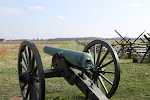Facing a worldwide, two-front war, the United States followed the example of Great Britain and supplemented it all-male fighting force with women in numerous noncombatant roles. Women served in the Army and Navy Nurse Corps, Women's Army Corps (WAC), and in the Navy (WAVES), Coast Guard, and Marine Corps. Although not officially members of the armed forces, Women Airforce Service Pilots (WASPs) provided critical support for the war effort by ferrying airplanes. Other women worked with the military through organizations such as the American Red Cross, the USO, and the Civil Air Patrol.
At the beginning of World War II, the United States had no facilities, staff, or regulations in place to handle enemy prisoners. Hastily constructed POW camps popped up across America, mostly in the South and Midwest. One of the largest was near Ruston but its first inhabitants were not enemy POWs but some of the first American women affiliated with the U.S. Army. Due to the initial slow influx of captured soldiers, the facility first served as a basic training base for the Women's Army Auxiliary Corps.
President Franklin Roosevelt set a goal of enlisting 25,000 WAACs by June 30, 1943. WAAC recruiting exceeded the objective by November 1942 and the sole training center at Fort Des Moines, Iowa reached its capacity. New training centers opened at Fort Devens, Massachusetts; Fort Oglethorpe, Georgia; and Camp Ruston.
 |
| New WAAC recruits arrive at Camp Ruston, 1943. (U.S. Army photo) |













